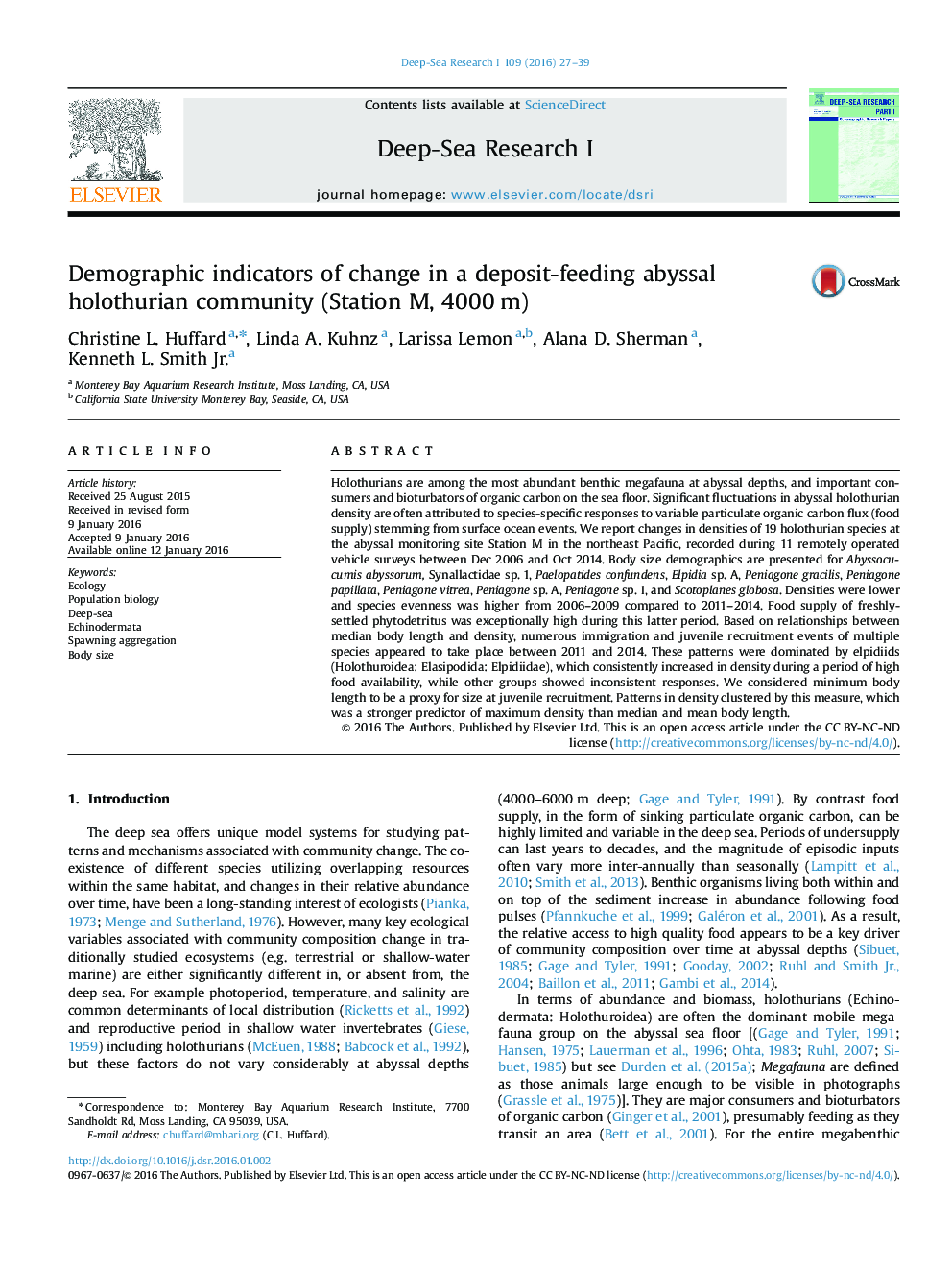| Article ID | Journal | Published Year | Pages | File Type |
|---|---|---|---|---|
| 6383425 | Deep Sea Research Part I: Oceanographic Research Papers | 2016 | 13 Pages |
â¢We studied change in holothurian demographics at the time-series site Station M.â¢2006-2009 had lower densities and higher species evenness than 2011-2014.â¢Maximum densities were significantly inversely correlated with minimum body length.â¢High-food years exhibited periods of recruitment and immigration by multiple species.â¢Responses to high-food conditions took place primarily in the group Elpidiidae.
Holothurians are among the most abundant benthic megafauna at abyssal depths, and important consumers and bioturbators of organic carbon on the sea floor. Significant fluctuations in abyssal holothurian density are often attributed to species-specific responses to variable particulate organic carbon flux (food supply) stemming from surface ocean events. We report changes in densities of 19 holothurian species at the abyssal monitoring site Station M in the northeast Pacific, recorded during 11 remotely operated vehicle surveys between Dec 2006 and Oct 2014. Body size demographics are presented for Abyssocucumis abyssorum, Synallactidae sp. 1, Paelopatides confundens, Elpidia sp. A, Peniagone gracilis, Peniagone papillata, Peniagone vitrea, Peniagone sp. A, Peniagone sp. 1, and Scotoplanes globosa. Densities were lower and species evenness was higher from 2006-2009 compared to 2011-2014. Food supply of freshly-settled phytodetritus was exceptionally high during this latter period. Based on relationships between median body length and density, numerous immigration and juvenile recruitment events of multiple species appeared to take place between 2011 and 2014. These patterns were dominated by elpidiids (Holothuroidea: Elasipodida: Elpidiidae), which consistently increased in density during a period of high food availability, while other groups showed inconsistent responses. We considered minimum body length to be a proxy for size at juvenile recruitment. Patterns in density clustered by this measure, which was a stronger predictor of maximum density than median and mean body length.
Graphical abstractDownload full-size image
